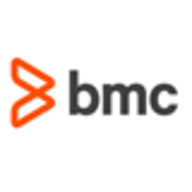


BMC TrueSight Network Automation and SolarWinds Server Configuration Monitor are two leading products in the network and server management space. BMC TrueSight Network Automation stands out for comprehensive automation features, while SolarWinds Server Configuration Monitor is popular for its ease of deployment and user-friendly configuration.
Features: BMC TrueSight Network Automation is valued for its automation capabilities, comprehensive reporting, and scalability. SolarWinds Server Configuration Monitor stands out for its straightforward configuration monitoring, real-time change tracking, and flexibility. Users find SolarWinds' intuitive system and quick setup more appealing than BMC's more complex feature set.
Room for Improvement: BMC TrueSight Network Automation needs a more intuitive design, better integration with third-party tools, and a less steep learning curve. SolarWinds Server Configuration Monitor requires enhanced security features, improved scalability for enterprise environments, and additional customization options.
Ease of Deployment and Customer Service: SolarWinds Server Configuration Monitor is generally easier to deploy due to its simpler setup and configuration process. Users report faster implementation and minimal training requirements. BMC TrueSight Network Automation, while robust, requires more time and expertise for deployment. BMC's customer service is highly responsive and supportive, often outperforming SolarWinds in this regard.
Pricing and ROI: BMC TrueSight Network Automation has a higher upfront cost but delivers significant ROI through advanced automation and reduced manual intervention. SolarWinds Server Configuration Monitor, with its lower initial cost, provides good ROI through ease of use and immediate operational improvements. Users find SolarWinds more cost-effective, especially for small to medium businesses, while BMC offers greater long-term value for larger enterprises.



Microsoft Intune provides centralized management of mobile devices and applications, ensuring security, compliance, and productivity through integration with Microsoft services like Microsoft 365 and Azure Active Directory.
Organizations use Intune for managing mobile devices and applications, enhancing security and compliance across platforms. With features like single sign-on, conditional access, and zero-touch deployment via Autopilot, it facilitates efficient operations. Intune's scalability, easy enrollment, and capabilities such as remote wipe support diverse device management, offering robust data protection and efficient operation. Despite its features, improvement areas include reporting, compatibility with non-Microsoft devices, and better support for macOS and Linux devices.
What are the key features of Microsoft Intune?
What benefits should users look for in reviews?
In industries such as finance, healthcare, and education, Microsoft Intune is implemented to ensure secure and compliant device management. Companies leverage its capabilities to deploy security policies and manage both corporate-owned and BYOD environments, facilitating a unified approach to data protection and compliance.
Network automation and management software reduces network outages and downtime by automating configuration, change and compliance processes. Organizations depend on high performance across their network to keep the business running at peak efficiency but new security threats make it hard for network administrators to keep pace with the demands for new services and safeguard the health of the network.
Network compliance
Network automation
Configuration backup
Vulnerability assessment
Network Insight for Cisco and Palo Alto
Integration with Network Performance Monitor
We monitor all Configuration Management reviews to prevent fraudulent reviews and keep review quality high. We do not post reviews by company employees or direct competitors. We validate each review for authenticity via cross-reference with LinkedIn, and personal follow-up with the reviewer when necessary.